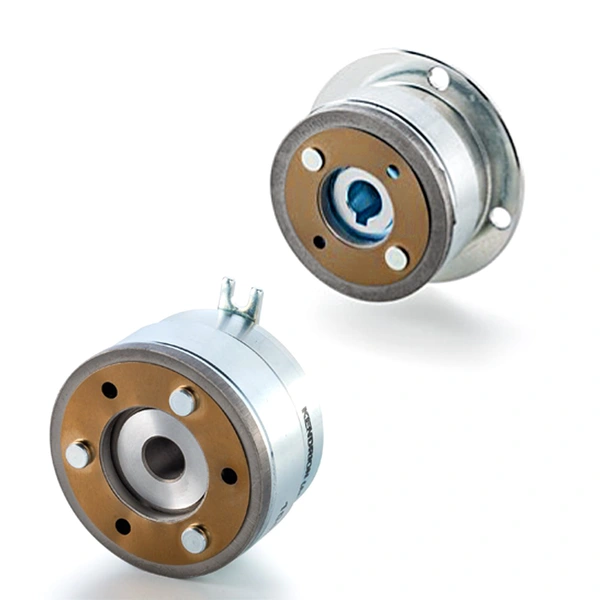Electromagnetic clutches 14.100 and brakes 14.110
Precision and a long service life – install in any mounting position – virtually maintenance-free
The rotational torque or braking torque is transferred in a frictionally engaged fashion during dry running. When DC voltage is applied, the torque is transferred free from backlash. When deenergised, the pre-loaded spring of the armature plate releases the clutch without residual torque.
The clutches and brakes can be installed in any mounting position and are virtually maintenance-free.
Highlights
- Variety of stator and armature plate designs for optimum adaptation to a wide range of operating conditions
- Can be installed in any mounting position
- Easy to service
CAD data for electromagnetic clutches 14.100 and brakes 14.110
Functional description
DC voltage is applied to the coil via the connecting cable to generate torque. The resulting magnetic field acts on the armature plate via the working air gap, pulling it towards the friction surface of the rotor against the restoring force of the pre-tensioned spring. Torque
is transmitted by friction. The clutch is disconnected by interrupting the power supply. Because there is now no magnetic force, the annular spring pulls
the armature plate back to its original position, so that the clutch is released without any residual torque.
The brake functions in a similar way. It does not contain a rotor. The rotating armature plate is pulled against the stationary stator.
Designs are available for mounting on flanges and shafts.
Power range
- Damping of torsional vibrations.
- Axial plug-in – easy to mount
- Torques from 0.3 to 3.6 Nm
- Braking torques from 0.6 to 4.5 Nm
Areas of application
- ATMs
- Automatic doors and access systems
- Roller conveyor systems
- Automation and robotics
- Medical technology

